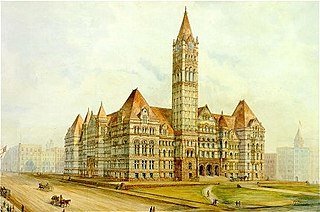
The Great Fire of Toronto of 1904 destroyed a large section of Downtown Toronto, Ontario, Canada on April 19, 1904. It was the second such fire for the city in its history.
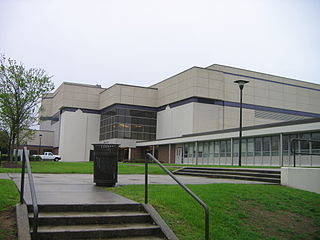
Williams Arena at Minges Coliseum is a multi-purpose arena in Greenville, North Carolina, US. The arena opened in 1968. It is home to the East Carolina University Pirates men's and women's basketball teams and women's volleyball team. The facility underwent a complete renovation prior to the 1994–95 season and currently seats 8,000 people. The building was named for the Minges and Williams families in honor of their longstanding support of the University.

Ocean Bank Convocation Center is a 5,000-seat multi-purpose arena at Florida International University in Westchester, Florida. It was opened on February 1, 1986, and is home to the FIU Panthers basketball and volleyball teams. It was originally named Sunblazer Arena, but was renamed Golden Panther Arena when FIU's athletic teams changed their nickname from Sunblazers to Golden Panthers in 1987. It was renamed Pharmed Arena in 2004, and then was briefly named FIU Arena in 2008 before being renamed to U.S. Century Bank Arena. The facility reverted to the FIU Arena name again from 2014 to 2018 before being renamed the Ocean Bank Convocation Center in 2018.

Gibbs Stadium is a 13,000-seat multi-purpose stadium in Spartanburg, South Carolina. It opened in 1996 and is home to the Wofford College Terriers football team. It is also the home to the Spartanburg High School varsity football team. It is home to the 30th largest college football scoreboard in the nation at 1,485 square feet (138.0 m2). It was named for the Gibbs family, long-time donors to Wofford, for their $1 million donation to build it.
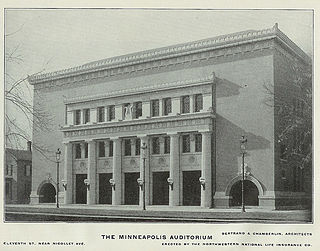
Minneapolis Auditorium was an indoor arena in Minneapolis, Minnesota. It hosted the NBA's Minneapolis Lakers from 1947 until they moved to the Minneapolis Armory in 1959. The arena held 10,000 people and was built in 1927. The building fell into obscurity after the opening of the Met Center in suburban Bloomington. It was demolished in 1988 to make way for the Minneapolis Convention Center.
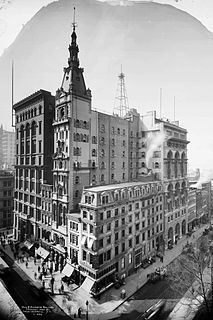
The New York Evening Mail (1867–1924) was an American daily newspaper published in New York City. For a time the paper was the only evening newspaper to have a franchise in the Associated Press.

Truist Stadium is a ballpark in Winston-Salem, North Carolina that replaced Ernie Shore Field. It is primarily used for baseball, and is the home field of the Winston-Salem Dash minor league baseball team and primary home field of the Carolina Disco Turkeys summer collegiate baseball team.

The Clay County Savings Association in Liberty, Missouri, was robbed on February 13, 1866, making it one of the earliest documented daylight bank robberies. The robbers escaped with at least $60,000 and killed a bystander outside. The robbery is believed to have been conducted by a group of former Confederate guerrillas, possibly led by Jesse James or Archie Clement, which became known as the James–Younger Gang.

Thackeray Hall is an academic building of the University of Pittsburgh and a contributing property to the Schenley Farms National Historic District at 139 University Place on the campus of the University of Pittsburgh in Pittsburgh, Pennsylvania, United States.
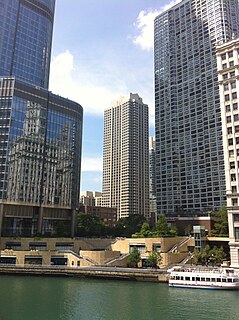
Plaza 440 is a 49-story residential condominium building located in downtown Chicago, Illinois.
Janesville Ice Arena is an ice arena and skating center owned by the city of Janesville, Wisconsin. It is home to the Janesville Jets, a North American Hockey League team, and hosts high school and youth hockey programs.

The Orpheum Theatre is a live performance and musical theater in downtown Madison, Wisconsin, located one block from the Wisconsin State Capitol.
William Baumgarten & Co. was an interior design firm and the first American producer of Aubusson-style tapestries. The manufactory was active between 1893 and 1914.

The Stevens Building is a commercial and office building located in downtown Portland, Oregon, listed on the National Register of Historic Places. The 12-story building was designed by Whidden & Lewis. The design is similar to the Failing Office Building (1907) and Wilcox Building (1911), also by Whidden & Lewis. Construction began in August 1913 and was completed in 1914, with the building opening on May 1, 1914. The total construction cost was $375,000. The building is approximately 152 feet (46 m) tall.

The Cross Insurance Center is a 5,800-seat multi-purpose arena in Bangor, Maine, United States. The arena holds up to 8,500 people for concerts, and features an attached 2,000-person convention center. It was built at an estimated cost of $65 million. Part of the city's Bass Park complex, it is located across from Hollywood Casino Bangor. It is the home of the basketball teams of the Maine Black Bears.

The World Trade Center Vehicle Security Center and Tour Bus Parking Facility, or simply the Vehicular Security Center (VSC), is a secure complex for truck delivery and underground parking at the World Trade Center in Manhattan, New York City. The entrance to the VSC is located at street-level along the southern edge of the National September 11 Memorial & Museum on Liberty Street. The VSC is connected via tunnels that feed the entire 16-acre (65,000 m2) WTC complex, linking the security checkpoint at its entrance with the buildings and services at the complex requiring vehicular services. Underground garages provide parking for tenants, visitors, and tour buses.
The Waterman Gymnasium was the first on-campus gymnasium at the University of Michigan in Ann Arbor, Michigan. The building was the first home of the Michigan Wolverines men's basketball team. The building stood at the corner of North University Avenue and East University Avenue, at the northeast corner of the original campus.
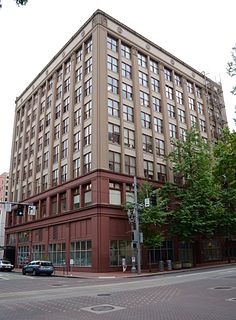
The J.K. Gill Company, also known as J.K. Gill and Gill's, was an office supply company specializing in books and school supplies, based in Portland, Oregon, United States. The company existed for about 130 years. Operating mainly in the Pacific Northwest states of Oregon and Washington, the company at its peak employed over 500 and had retail stores in four western states, including California and Arizona.
The Model 42 was an entry-level four seat passenger car produced by GM's Oldsmobile Division in 1914, offered as a replacement to the Oldsmobile Curved Dash runabout when it was discontinued in 1908, and was the junior platform to the Oldsmobile Six introduced in 1913. GM had acquired Elmore Manufacturing Company, Oldsmobile and Oakland Motor Car Company in 1908 and Cartercar and Rainier Motor Car Company in 1909 as their entry-level models, and Oldsmobile products were being repositioned in their new hierarchy as GM began to consolidate operations after William Durant had left.
The Florence Apartment House was an apartment building in New York City on the northeast corner of East 18th Street and Fourth Avenue.

















